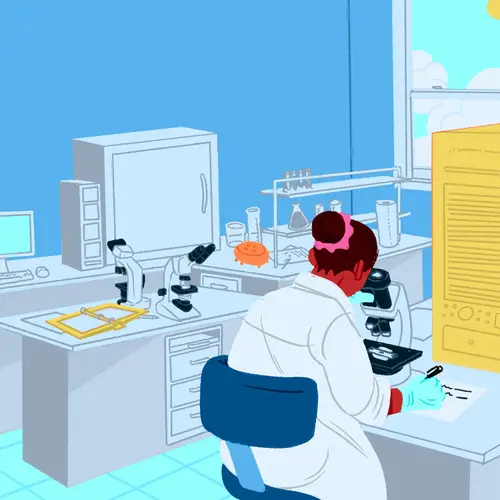Humans rely on blood vessels called arteries to carry oxygen-rich blood to all parts of our bodies. Vasospasm occurs when an artery suddenly narrows and the blood supply is drastically reduced. It most often happens in the brain or in the heart. The results can be serious. Sometimes the term vasospasm is used to describe the narrowing of small blood vessels in the hands.
What Is a Cerebral Vasospasm?
"Vaso" means vessel. A spasm is a sudden muscular contraction. A vasospasm is a sudden contraction of the muscular walls of a blood vessel. In some cases, we know what causes the muscles to contract. Other times it's a mystery.
Cerebral relates to the brain. A cerebral vasospasm almost always follows another major event inside the skull, called a subarachnoid hemorrhage (SAH). This is a kind of stroke that happens when a blood vessel on the surface of the brain breaks. Blood fills the space between the skull and the brain. It leaks beneath the arachnoid membrane.
Subarachnoid hemorrhage or SAH is most often caused by an aneurysm. An aneurysm is a weak place in a blood vessel often resulting in a balloon-like bulge.
SAH is the most dangerous type of stroke. You might survive the stroke but then have a cerebral vasospasm, which puts your health and life at risk for a second time.
Signs, Diagnosis, and Treatment of Cerebral Vasospasm
Doctors closely follow people who have had a SAH, watching for signs of cerebral vasospasm. These signs include:
- Stiff neck
- One-sided paralysis
- Impaired speech
- Confusion
Cerebral vasospasm usually occurs in the two weeks following the SAH. Doctors use various imaging tests to diagnose vasospasm. One diagnostic tool is cerebral angiography, which is an X-ray with contrast dye. It is invasive and carries some risk. The transcranial Doppler (TCD) is a type of non-invasive ultrasound. Doctors can do it at your bedside.
Doctors sometimes use medicines called calcium channel blockers to protect the brain following a SAH. In case of vasospasm, doctors may use triple-H therapy, a combination of steps that increase blood flow to the brain. The aim is to open the narrowed blood vessels.
What is Coronary Artery Vasospasm?
Vasospasm can also occur in an artery that supplies blood to the heart. When one of these arteries suddenly narrows, the body reacts immediately. Pain may strike the jaw, chest, arm, and back, feeling much like a heart attack. In a healthy individual, vasospasm may not be serious. In someone with coronary artery disease, it can cause a heart attack or otherwise damage the heart.
Vasospasm happens when something disrupts the chemical messengers that control the heart. Causes include:
- Stress or anxiety
- Hyperventilation
- Transitioning from sleep to wakefulness
- Some legal drugs, such as medications for migraine
- Illegal drugs such as cocaine and amphetamines
- Some herbal supplements, like bitter orange
The pain from coronary artery vasospasm is sometimes called variant angina. It can feel like classic angina pectoris, the chest pain and pressure that some people have during exercise. Variant angina occurs when you are resting, most often at night.
Diagnosis of Coronary Artery Vasospasm
Doctors often find it hard to distinguish between coronary artery vasospasm and other forms of heart disease. The process often involves ruling out other heart conditions that could cause the symptoms.
Doctors sometimes use angiography to look at the arteries. When a person has had a heart attack, the doctor may see a blocked artery. If a person has coronary artery disease, the doctor may see a partially closed artery. With vasospasm, the arteries sometimes look completely clear.
Diagnosis is more difficult when a person with heart disease has an attack that appears to be vasospasm. Doctors can confirm a diagnosis of vasospasm by using certain drugs to trigger a spasm. Some cardiologists are not trained in these procedures or are uncomfortable using them.
Treatment of Coronary Artery Vasospasm
Immediate treatment of coronary artery vasospasm involves using a medication called nitroglycerin to open up the artery. To prevent future attacks, doctors sometimes recommend timed-release nitroglycerin taken at bedtime, since many attacks occur at night. They may also prescribe calcium channel blockers or other drugs that relax the arteries.
Vasospasm and Raynaud Syndrome
Vasospasm of the heart and brain happens in large arteries. But the term vasospasm is sometimes used for a syndrome in which smaller arteries constrict, called Raynaud syndrome. This condition causes abnormal sensations and color changes in the hands. These changes usually occur in response to cold.
The hands may turn white, blue, or red. They may burn, prickle, or feel cold. Low temperatures usually trigger these reactions, but emotional stress may be a trigger as well. Other extremities, such as the toes and nose, may also be affected.
Most cases of Raynaud syndrome occur in women aged 15 to 40. A few other conditions, such as rheumatoid arthritis, may cause Raynaud syndrome. In about 80% of cases, doctors are unable to discover a cause. Doctors usually diagnose Raynaud syndrome based on a physical examination. Other tests aren't usually needed.
If you have Raynaud syndrome, you should avoid getting too cold. In cold weather, you should always wear coats, hats, and mittens. You may need to use mittens on your hands when taking food out of the freezer. Smoking should be avoided because nicotine constricts blood vessels. In some cases, doctors may prescribe calcium channel blockers.

